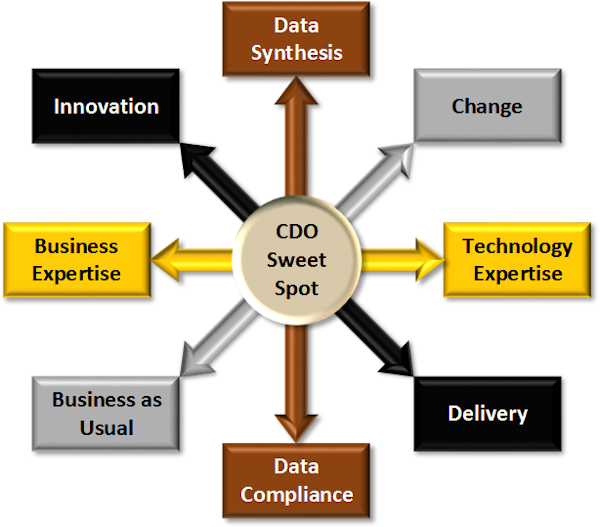I recently commented on an article by Bruno Aziza (@brunoaziza) from AtScale [1]. As mentioned in this earlier piece, Bruno and I have known each other for a while. After I published my article – and noting my interest in all things CDO [2] – he dropped me a line, drawing my attention to a further piece he had penned: CDOs: They Are Not Who You Think They Are. As with most things Bruno writes, I’d suggest it merits taking a look. Here I’m going to pick up on just a few pieces.
First of all, Bruno cites Gartner saying that:
[…] they found that there were about 950 CDOs in the world already.
In one way that’s a big figure, in another, it is a small fraction of the at least medium-sized companies out there. So it seems that penetration of the CDO role still has some way to go.
Bruno goes on to list a few things which he believes a CDO is not (e.g. a compliance officer, a finance expert etc.) and suggests that the CDO role works best when reporting to the CEO [3], noting that:
[…] every CEO that’s not analytically driven will have a hard time gearing its company to success these days.
He closes by presenting the image I reproduce below:
![CDO Venn Diagram [borrowed from AtScale] CDO Venn Diagram [borrowed from AtScale]](https://peterthomas.files.wordpress.com/2017/02/cdo-venn-atscale.png?w=700)
and adding the explanatory note:
- The CDO is at the intersection of Innovation, Compliance and Data Expertise. When all he/she just does is compliance, it’s danger. They will find resistance at first and employees will question the value the CDO office adds to the company’s bottom line.
First of all kudos for a correct use of the term Venn Diagram [4]. Second I agree that the role of CDO is one which touches on many different areas. In each of these, while as Bruno says, the CDO may not need to be an expert, a working knowledge would be advantageous [5]. Third I wholeheartedly support the assertion that a CDO who focusses primarily on compliance (important as that may well be) will fail to get traction. It is only by blending compliance work with the leveraging of data for commercial advantage in which organizations will see value in what a CDO does.
Finally, Bruno’s diagram put me in mind of the one I introduced in The Chief Data Officer “Sweet Spot”. In this article, the image I presented touched each of the principle points of a compass (North, South, East and West). My assertion was that the CDO needed to sit at the sweet spot between respectively Data Synthesis / Data Compliance and Business Expertise / Technical Expertise. At the end of this piece, I suggested that in reality, the intervening compass points (North West, South East, North East and South West) should also appear, reflecting other spectrums that the CDO needs to straddle. Below I have extended my earlier picture to include these other points and labeled the additional extremities between which I think any successful CDO must sit. Hopefully, I have done this in a way that is consistent with Bruno’s Venn diagram.

The North East / South West axis is one I mentioned in passing in my earlier text. While in my experience business is seldom anything but usual, BAU has slipped into the lexicon and it’s pointless to pretend that it hasn’t. Equally, Change has come to mean big and long-duration change, rather than the hundreds of small changes that tend to make up BAU. The North West / South East axis is new and inspired by Bruno’s diagram. In today’s business climate, I believe that the successful CDO must be both innovative and have an ability to deliver on ideas that he or she generates.
As I have mentioned before, finding someone who sits at the nexus of either Bruno’s diagram or mine is not a trivial exercise. Equally, being a CDO is not a simple job; then very few worthwhile things are easy to achieve in my experience.
Notes
| [1] | |
| [2] | |
| [3] | |
| [4] | |
| [5] |







